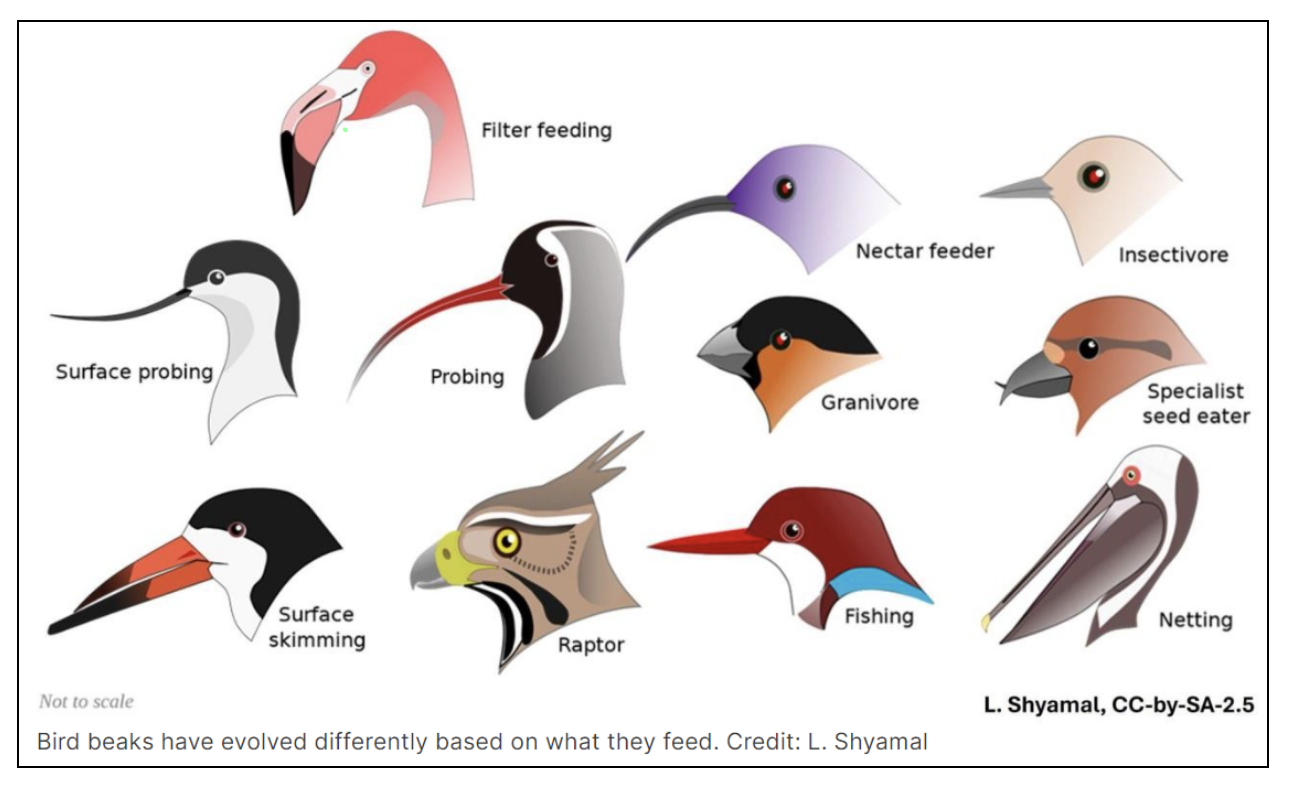News Excerpt:
A new study conducted by scientists from the Indian Institute of Technology Bombay (IIT Bombay), published in NPJ Systems Biology and Applications, has shed light on the process of speciation, meaning the formation of new species, in the absence of geographic barriers.
Key highlights of the Study:
- Researchers at IIT Bombay discovered the role of environmental resources, genes, and mating in the development of new species in the same area, challenging the traditional view that new species can develop only in distinct geographies.
- Traditionally, it was believed that speciation largely occurs when populations of a species are isolated from each other by geographical barriers, a process known as allopatric speciation.
- This IIT Bombay research suggests that speciation can happen even when populations live in the same area without geographical barriers, a phenomenon called sympatric speciation.
-
- While there is ecological evidence in favor of the sympatric speciation hypothesis, there has been no experimental evidence until now.
- The researchers used a genetic-based model to investigate the factors that contribute to sympatric speciation when populations live in the same geographic area.
- The theoretical study focused on a population of birds using simulated data and specifically looked at how three aspects disruptive selection, sexual selection, and genetic architecture play a role in driving and maintaining sympatric speciation.
Disruptive Selection:
- In sympatric speciation, the "divide" in the population can be created due to non-uniform resources present in the environment, without the need for geographic barriers. This is called ecological disruptive selection.
- Disruptive selection is a process where individuals with extreme traits (e.g., beak size) have a higher fitness than those with intermediate traits.
- Disruptive selection is necessary for speciation to occur in sympatry because:
- a) It favors heritable differences in the population.
- b) It ensures that the offspring produced by mating between individuals belonging to two different groups do not survive.
- These two factors (heritable differences and reduced survival of hybrid offspring) are crucial for maintaining biodiversity in sympatry.
- In the study, the researchers focused on the physical trait of beak size in birds.
- Birds with small beaks were better adapted to utilize one type of food resource (e.g., nuts),
- Birds with longer beaks were more efficient at utilizing a different food resource (e.g., flower nectar).

Sexual selection:
- Sexual selection is a type of natural selection driven by competition for mates, It can lead to the evolution of elaborate traits that are attractive to potential mates
- In the study, researchers looked at how female mating preference based on a male's trait intensity (unique character) could play a role in speciation.
- Sexual selection is often considered a key driver of sympatric speciation.
- For instance, if blue-feathered birds develop a mating preference for their own kind. They will stop interbreeding with red-feathered birds, leading to distinct blue and red populations.
- The drawback of this hypothesis is that there is no basis for such a bias to evolve unless there is a fitness benefit, as it would reduce the mate pool.
- The researchers found that sexual selection based on special traits did not contribute to sympatric speciation in their model.
- Instead, they found that the preference for mates based on a relevant trait that helps in better utilization of environmental resources (in this case, beak size) was the driving force behind speciation.
- The study acknowledges the possibility of lower fitness of the offspring due to sexual selection based on certain traits.
Genetic architecture:
- The researchers discovered that genetic architecture, or how genes control the trait under selection, was a crucial factor in determining the likelihood of sympatric speciation.
- If the genetic architecture allows for changes in the trait under selection (beak size), a new species could develop even with a weak role of disruptive selection.
- The study assumes that birds from the two groups mate without any bias, and this bias does not change over time, which may not be true in natural populations.
- It is possible for birds from the two groups to evolve distinct markers that help them distinguish their "kind" from the other, leading to assortative mating.
Conclusion:
- The study challenges the traditional view that speciation can only occur in geographical isolation and highlights the importance of genetic architecture and ecological selection in driving the formation of new species.
- The researchers aim to take lessons from the theoretical model and design experiments to understand how reproductive barriers evolve between members of a population in sympatry, using yeast as a laboratory model.
- By unraveling the mysteries of speciation, scientists gain a deeper understanding of Earth's biodiversity and the processes generating it which opens new research avenues for the future.


